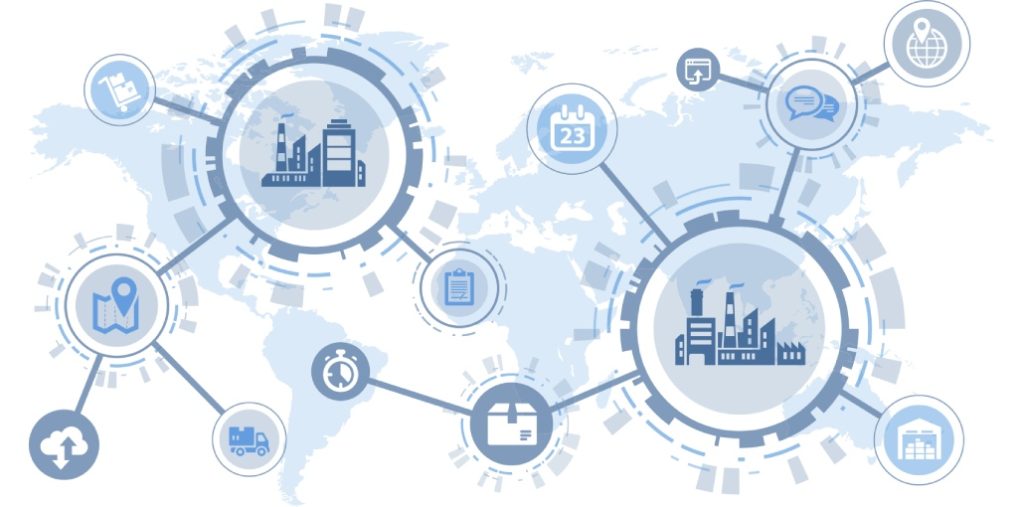The global economy, despite a gloomy outlook, exhibits remarkable resilience, advancing with steady growth paces, and inflation rates receding almost as quickly as they had previously climbed. This journey, riddled with setbacks, has seen post-pandemic supply chain disruptions, energy and food crises spurred by the Russo-Ukrainian conflict, soaring inflation, followed by a synchronized global tightening of monetary policies.
A Robust Outlook:
By the close of 2022, the global growth rate rebounded from a low of 2.3%, whilst the median inflation rate peaked at 9.4%. Our latest “World Economic Outlook” forecasts economic growth to stabilize at 3.2% over the next two years, with overall inflation projected to fall from 2.8% at the end of 2024 to 2.4% by the close of 2025. Most indicators suggest a soft landing for the economy.
Healing from Crises:
The forecast also predicts a lessening of the scars inflicted by crises over the past four years, although variations exist among countries. The United States economy has surpassed pre-pandemic levels, however, we now estimate that lower-income developing countries are bracing for greater setbacks, with many still struggling to emerge from the pandemic and the cost-of-living crisis.
Signs of Recovery:
Resilient growth coupled with swiftly descending inflation suggests favorable shifts in supply dynamics, including dwindling energy price shocks and a substantial rebound in labor supply in many advanced economies due to significant immigration. Monetary policy responses have played a pivotal role in anchoring inflation expectations, notwithstanding a potential weakening in policy transmission, as fixed-rate mortgages become more prevalent.
Persistent Echoes of Inflation:
Although the downward trend in inflation is optimistic, the goal has not yet been achieved. Concern arises as the progress toward inflation targets has stalled since the start of the year. The improvement can be largely attributed to declining energy prices and the easing of commodity inflation—as supply chain tensions lessen and China’s export prices fall. However, recent upticks in oil prices, partly due to geopolitical strains and persistent services inflation, suggest caution. Further trade constraints targeting Chinese exports may also exacerbate commodity inflation.

Economic Disparities Deepen:
The general resilience may mask vast disparities among nations.
The American Niche:
The American economy’s robust recent performance is due to solid productivity and employment growth, along with persistently high demand due to an overheated economic state. This necessitates a cautious, gradual relaxation of policies by the Federal Reserve. The current fiscal stance is worryingly misaligned with long-term sustainability, posing risks to inflation control efforts and, ultimately, fiscal and financial stability globally. Trade-offs are inevitable.
Eurozone’s Fragile Growth:
Economic growth is predicted to bounce back in the Eurozone, though from a low starting point, hindered by past shocks and constricted monetary policies. Persistent rapid wage increases and elevated services inflation may delay the return to inflation targets. Unlike the U.S., evidence of an overheated economy in the Eurozone is scant, calling for cautious calibration of monetary easing by the European Central Bank to prevent inflation from falling below target. Although the labor market appears robust, if European companies have been stockpiling labor in anticipation of an economic upturn that fails to materialize, this perceived strength could prove illusory.
China’s Real Estate Ripple Effect:
China’s economic momentum continues to be dampened by the real estate market’s downturn. Without fundamental remedial actions, domestic demand is expected to remain lackluster. A weak domestic demand could lead to a bolstered trade surplus, which risks intensifying geopolitical tensions and trade strains.

Emerging Market Strengths:
Many other large emerging market economies display robustness, occasionally benefiting from global supply chain adjustments and escalating Sino-American trade tensions. The influence of these economies on the global stage is expanding.
Charting The Policy Path:
Moving forward, policymakers ought to prioritize measures that maintain or even bolster global economic resilience.
- Reconstituting Fiscal Buffers: Rebuilding fiscal buffers is urgent. Credible fiscal consolidation helps reduce financing costs, improve budgetary space, and reinforce financial stability. The current fiscal plans remain inadequate, and with a record number of elections this year, deviations could amplify.
- Reversing Downtrend in Growth Prospects: To induce faster, more efficient allocation of capital and labor, enhancing growth is critical. For low-income countries, structural reforms to foster domestic and foreign direct investment are key to containing borrowing costs and diminishing financing needs.
- Tapping into AI’s Potential: Artificial Intelligence seems promising for productivity gains, though it may significantly disrupt labor and financial markets. Countries must invest in digital infrastructure and human capital to harness AI’s potential for everyone’s benefit.
- Bracing for Geopolitical Fractures: Intensified geopolitical fractures and surges in trade and industrial policies overshadow mid-term growth prospects. Thus, global economic resilience may be compromised, not strengthened. Reversing this trend is now imperative.
- Green Transition Investment: The green transition necessitates massive investments. Progress towards reducing emissions must intensify. Developed economies and China need to step up, offering technology transfer and substantial financing to support green investment escalation in other emerging markets and developing economies.
In these and many other challenges, multilateral frameworks and cooperation remain crucial to achieving progress.





























